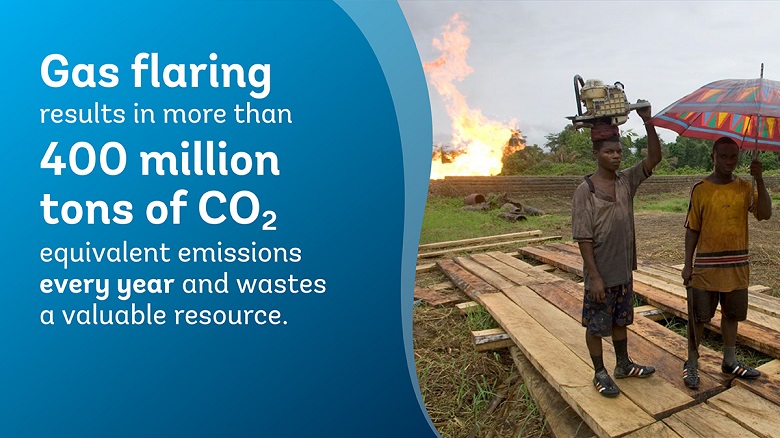An exclusive, as claimed, or not.... here's context from The World Bank about Global Gas Emissions: Billions of cubic meters of natural gas is flared annually at oil production sites around the globe.
---------------------------------------------------------------------------------------------------------------------------
Exclusive: New project tracks natural gas flaring using space data
A new project uses satellite data to track the flares from companies burning off excess natural gas. . .
What's happening: The project — called Flaring Monitor — is able to pinpoint companies that are flaring at any given time and track it against self-reported flaring data given to state regulatory agencies.
- The tool could be particularly useful because it's able to tie flaring to specific companies, Robert Kendall, the co-founder of Bazean, the company behind the project told Axios.
- The project makes use of imagery from Planet and data from the VIIRS instrument on NASA's Suomi NPP satellite, which helps spot tiny hotspots due to flaring as well as larger ones, such as from wildfires worldwide.
Details: Flaring Monitor has already found Shell appears to be doing better on flaring than some other large energy companies.
- "Shell is clearly making different corporate level decisions that is resulting in these metrics looking different," Kendall said.
- Many smaller companies are involved in oil and gas drilling in North Dakota, Texas, Pennsylvania and other states, and Flaring Monitor could allow for better monitoring of them as well.
The big picture: Kendall envisions a future in which companies that have a lower carbon intensity for their commodities could have a premium on their stock price because of granular data like this.
What's next: According to Kendall, the company hopes to take the project global eventually, monitoring flaring in other locations aside from the U.S. to help hold other governments and companies accountable and aid in emissions cuts.
----------------------------------------------------------------------------------------------------------------------------
Flaring gas wastes a valuable energy resource that could be used to support economic growth and development in many countries.
Flaring also contributes to climate change by releasing millions of tons of CO2 to the atmosphere, with harmful impacts to the environment from un-combusted methane and black carbon emissions.
Global Gas Flaring Reduction Partnership (GGFR)
"Billions of cubic meters of natural gas is flared annually at oil production sites around the globe. Flaring gas wastes a valuable energy resource that could be used to support economic growth and development in many countries. Flaring also contributes to climate change by releasing millions of tons of CO2 to the atmosphere, with harmful impacts to the environment from un-combusted methane and black carbon emissions.

During oil production, the associated natural gas is often flared when economic, regulatory or technical barriers to the development of gas markets and gas infrastructure prevent it from being used or when reinjecting the associated gas back into the reservoir is not possible.
-------------------------------------------------------------------------------------------------------------------------------
Reference: https://www.flaringmonitor.org/





No comments:
Post a Comment